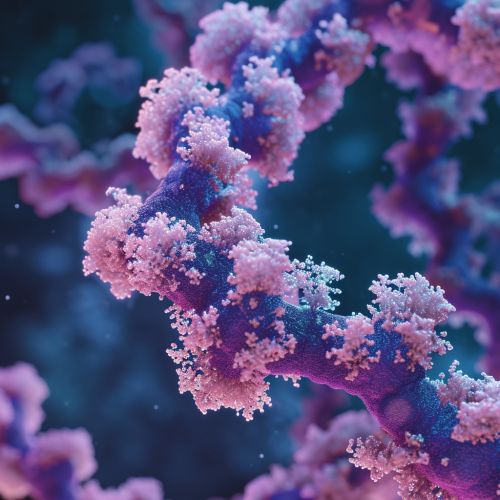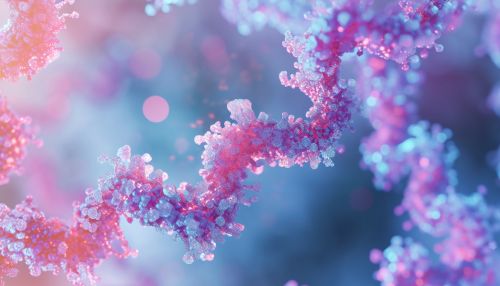Interleukin-20 receptor
Overview
The Interleukin-20 receptor is a type of protein complex that is part of the class II cytokine receptor family. It is involved in the process of inflammatory responses in the human body. The receptor is known to bind specifically to interleukin-20, a cytokine involved in the regulation of immune responses and tissue homeostasis.


Structure
The Interleukin-20 receptor is a heterodimeric protein complex composed of two subunits: IL-20RA and IL-20RB. These subunits are encoded by the IL20RA and IL20RB genes respectively. Both subunits are necessary for the receptor to function properly. The IL-20RA subunit is shared with the Interleukin-22 receptor, while the IL-20RB subunit is shared with the Interleukin-24 receptor.
Function
The primary function of the Interleukin-20 receptor is to mediate the actions of interleukin-20. When interleukin-20 binds to the receptor, it triggers a cascade of intracellular events that lead to the activation of the JAK-STAT signaling pathway. This pathway is crucial for the regulation of immune responses and inflammation in the body.
Role in Disease
Abnormal function or expression of the Interleukin-20 receptor has been associated with several diseases. Overexpression of the receptor has been observed in psoriasis, a chronic skin disease characterized by inflammation and excessive skin cell growth. In addition, mutations in the genes encoding the receptor subunits have been linked to increased susceptibility to autoimmune diseases.
Therapeutic Potential
Due to its role in inflammation and immune regulation, the Interleukin-20 receptor is considered a potential therapeutic target for a variety of diseases. Several drugs that target the receptor or its ligand, interleukin-20, are currently under development for the treatment of psoriasis and other inflammatory diseases.
